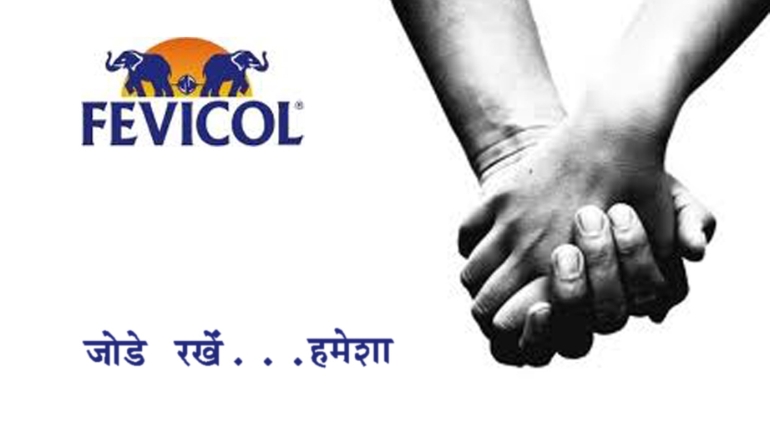The single-handed dominance of the white glue market in India which Fevicol has been enjoying for more than five decades is a testimony to the brand’s inherent strength and quality. With genius advertising and marketing campaigns, the brand has become synonymous with the word ‘adhesive’ for everyone, creating an unfathomable territory for itself in the market
A brand that has seamlessly merged with the day-to-day activities of every household in the country, Fevicol along with its extensions such as Feviquik, Fevistick, Fevitite, etc. is being used extensively in schools, offices, and do-it-yourself segments. From the school-going kid who uses the Fevicol adhesive for his arts and crafts lessons to the neighborhood carpenter who considers Fevicol his best friend, the brand has come to forge an inseparable bond with people who influence the product – consultants, builders, architects, and carpenters. The brand has become a part of every Indian’s vocabulary as a metaphor for strong bonding or stubborn stickiness and appears not only in mundane conversations or topical jokes, but Bollywood movies as well. The brand has grown immensely in virtue because of the promising products it offers. Today, it not only has its firm hold in its home market, but it is the largest selling adhesive brand in Asia, with a presence in over 50 countries.
BONDING WITH EASE
Fevicol was launched in the year 1959, as the Parekh Group floated Pidilite Industries to develop a substitute for the collagen and fat-based adhesives which the carpenters used on a very large scale. The glues were sold unbranded and with the introduction of a new option the Group planned to capitalize on the potential market for synthetic resin adhesives, or “white glue” in India. And thus, Fevicol was born.
For the first 5–7 years the challenge before Pidilite was to make Fevicol the most preferred glue for making furniture. As the trade was used to glues based on natural products, selling synthetic glue was a difficult proposition, which required patient working with the end users. Initially, the new product faced problems in replacing the traditional options available, as the people were used to glues made out of natural products. Selling a synthetic adhesive was a difficult proposition and the company had to work a lot to impress the end users. The company acquired a different and viable marketing strategy to woo the customers and instead of selling through stores, Fevicol started to approach carpenters directly. This proved out to be one of the most successful strategies employed by the company and helped the brand gain a strong foothold in the white glue market.
THE CREATIVE STRATEGIST
An efficient and interactive marketing and advertising spree has been one of the most crucial supporters of the brands’ call to success. The company leaders remain a firm believer in the power of advertising and innovative packaging, and spend liberally on ad campaigns. This philosophy of the company has stood by over the years to continue its dominance over the market. The ads aim to capture the interests of wide audience and leave an imprint on their minds, so the next time when they go to purchase an adhesive they only ask for Fevicol.
The interesting campaigns are planned with an innovative approach to own ‘bonding’ through a mix of communication strategies that are filled with a touch of humor and come peppered with typical Indian flavors in catch phrases like “Dum laga kar haisa, zor laga kar haisya” and “Pakade rehna, chhodana nahi”. Some of its award winning TV advertisements include showcasing an egg that won’t crack because the hen that laid it fed from a Fevicol tube (1988), to more Indian-specific ones like a creaky bus carrying an unimaginable number of passengers glued together because of a Fevicol signage ad (2001).















